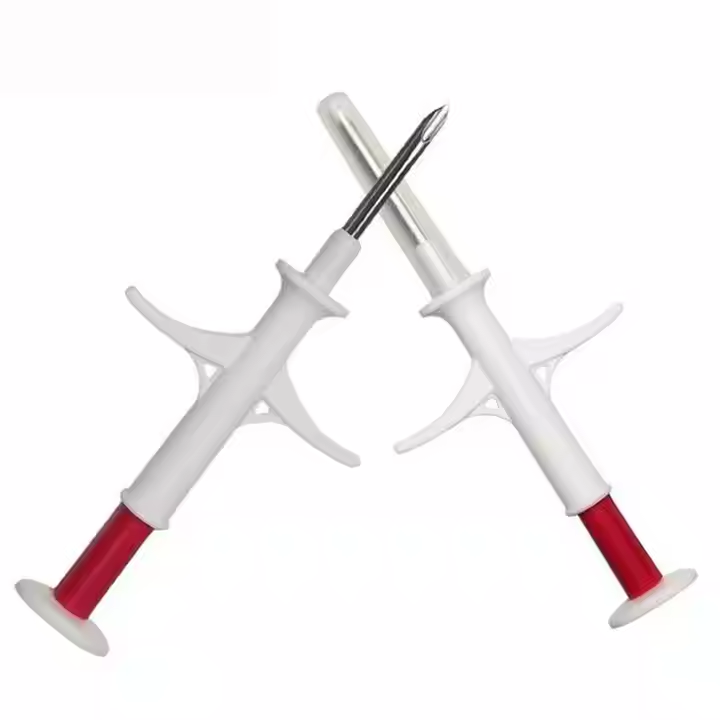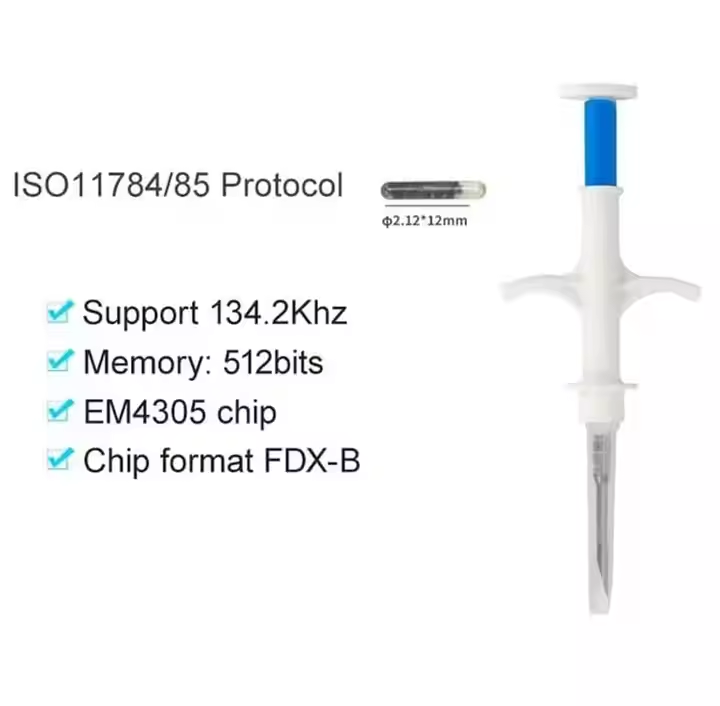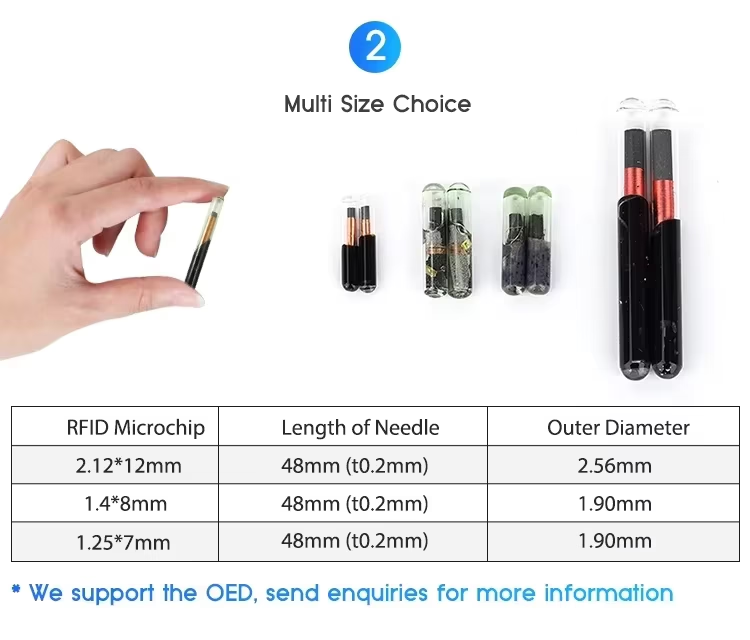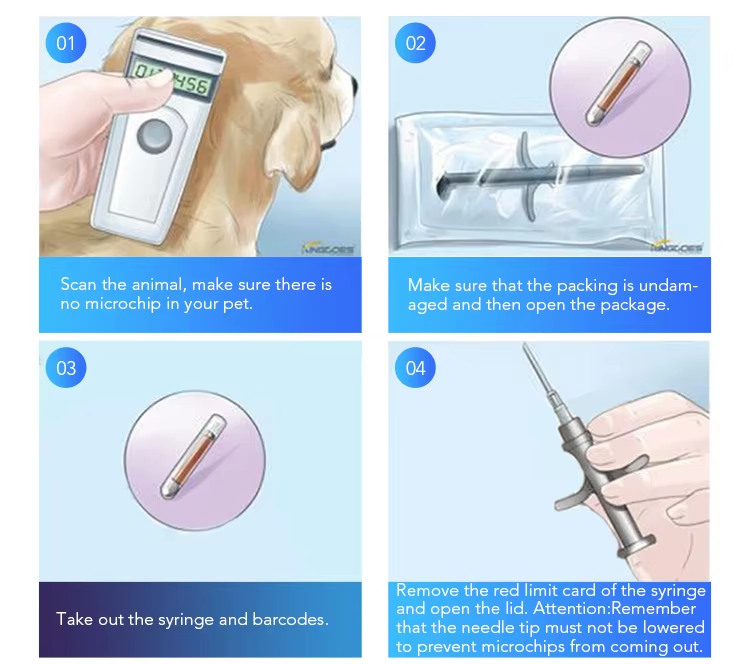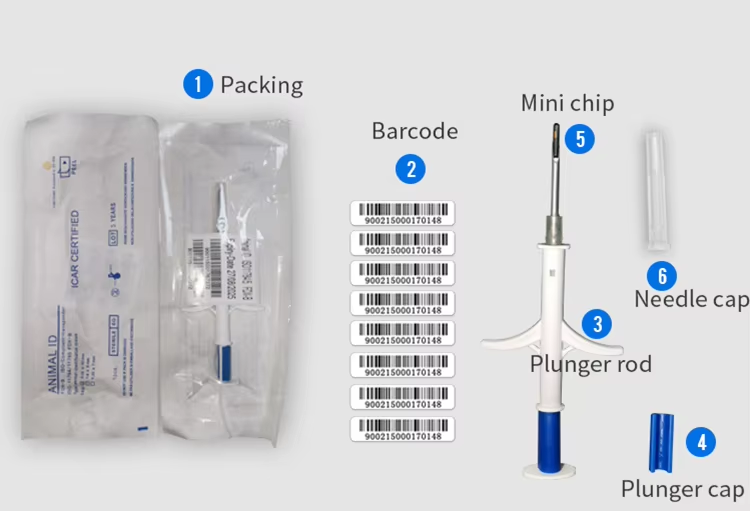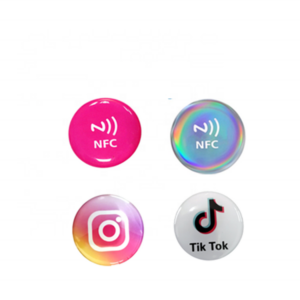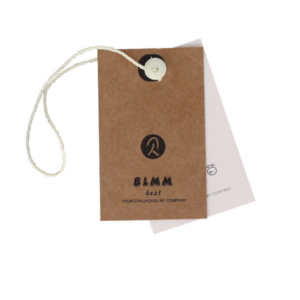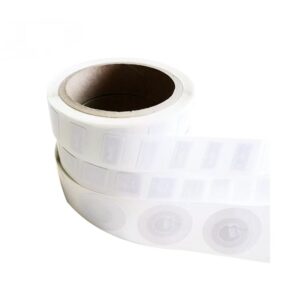RFID Glass Tube Syringe Tags For Animal Identification
RFID Glass Tube Syringe Tags For Animal Identification enable efficient animal identification and management, ensuring traceability in farming applications.
Description
RFID Glass Tube Syringe Tags For Animal Identification
RFID Glass Tube Syringe Tags are widely used in scenarios such as “rabies prevention and control”, “food traceability”, “animal husbandry and breeding management”, “inbreeding control” and “animal import and export certification” to achieve efficient management of the entire life cycle of animals. The chip is implanted into the animal through a syringe, and the reader antenna is close to the implantation point to read its unique ID number, realizing the digitalization of the entire process of epidemic prevention, traceability, and identity recognition.
Product features:
- Small size and light weight;
- Easy to implant;
- Encapsulate with high-stability bioglass;
- The surface has an anti-slip design to prevent chip displacement;
- Strong biocompatibility, no rejection, no infection.
Application areas:
Applicable to a variety of pets and livestock management such as cats, dogs, laboratory mice, pet minks, golden arowana, salmon, horses, rabbits, cattle, sheep, etc. Particularly suitable for large-scale farms, pet hospitals, animal research institutions and animal quarantine departments.
Syringe packaging information:
- Packaging material: medical breathable paper
- Disinfection method: EO ethylene oxide, disinfection validity period of ten years
- Syringe color: syringe is white, needle cannot be removed
- Packaging display: disinfection date, expiration date, 15-digit barcode code
Chip description:
- Chip type: EM4305 / customizable
- Package size: 2×12mm / 1.4×8mm / 1.25×7mm
- Package material: bioglass, lead-free and non-toxic material
Application scenario expansion description:
Against the background of growing demand for meat consumption, the scale of animal husbandry continues to expand, and RFID Glass Tube Syringe Tags provide a reliable solution for animal identification and epidemic prevention tracking. The chip comes with a unique UID, which can realize management tasks such as vaccination, epidemic prevention records, and market tracking, and also supports research and tracking of rare wild animals. The tag is disinfected by EO, with a service life of more than 10 years and data can be erased and written 100,000 times.
Supported equipment:
Compatible with handheld and desktop RFID readers and writers, convenient for reading or writing animal information.
📌 Product parameter table
| Item name | Parameter description |
|---|---|
| Product name | RFID Glass Tube Syringe Tags For Animal Identification |
| Working frequency | 134.2kHz (low frequency) |
| Animal identification format | FDX-A / FDX-B / HDX |
| Chip type | TK4100, EM4305, EM4200, T5577 (multiple options) |
| Protocol standard | Complies with ISO11784 / ISO11785 |
| Dimensions | 1.25×8mm / 1.4×8mm / 2.12×12mm / 3×13mm / 3×15mm (or customized) |
| Shell material | Bioglass, antibacterial, anti-allergic, excellent biocompatibility |
| Working temperature | -20℃ ~ 80℃, can reach 120℃ instantly |
| Storage temperature | -40℃ ~ 80℃ |
| Service life | More than 10 years, data can be read and written 100,000 times |
| Maximum reading distance | About 12cm (depending on the reading and writing device) |
| Other product features | The world’s only UID, strong water resistance, stable reading and writing after immersion in water, supports multiple memory format options |
Frequently Asked Questions
- Why choose your RFID Glass Tube Syringe Tags instead of products from other suppliers?
As one of the top five RFID tag manufacturers in China, we have more than 15 years of industry experience. Our glass tube tags are encapsulated with bio-grade glass, have excellent biocompatibility, are valid for up to ten years after EO disinfection, support 100,000 data erasures, and are stable and reliable. It is more suitable for high-demand environments such as large-scale breeding, epidemic prevention tracking and animal identity management. - Will the animal be rejected or infected after the chip is implanted?
No. The product uses a bioglass shell, which has good antibacterial and anti-allergic properties, and has an anti-slip layer on the surface to prevent the chip from shifting. We have been widely used in many countries and regions, and the safety and stability have been verified. - How to use RFID chips with equipment? Do I need to buy a reader?
We sell handheld and desktop RFID readers and writers, and customers can choose the appropriate equipment according to the actual situation on site. By placing the reader close to the implantation point, the animal’s unique ID number can be read, and information such as vaccines and health records can be written to achieve full-process traceability management.

